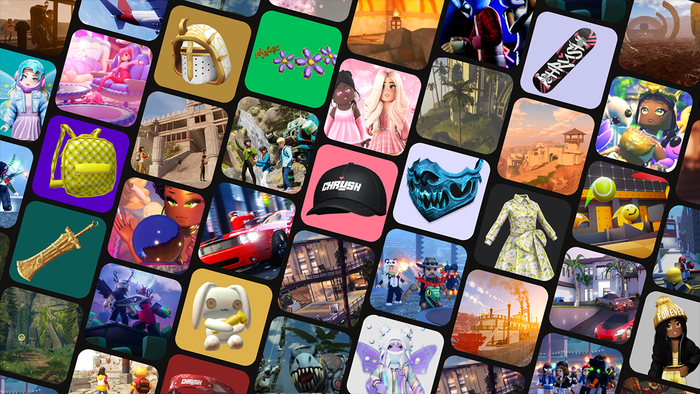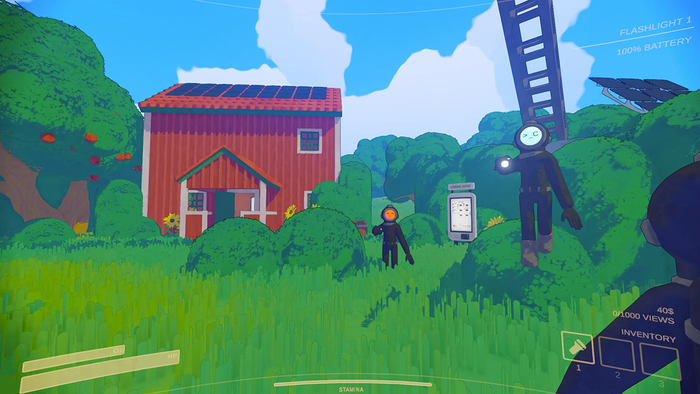Mark Foster, lead designer and programmer: "We gave the player a one-hit death; when I added in the fights, I just left them as single-hit kills, too. I felt like this just made sense in terms of gameplay."

Game Design Deep Dive is an ongoing Gamasutra series with the goal of shedding light on specific design features or mechanics within a video game, in order to show how seemingly simple, fundamental design decisions aren't really that simple at all.
Check out earlier installments on the heredity system of Hero Generations, traffic systems of Cities: Skylines, and the plant-growing mechanics of Grow Home.
Also, dig into our ever-growing Deep Dive archive for developer-minded features on everything from Amnesia's sanity meter to Alien: Isolation's save system.
Who: Mark Foster, lead designer and programmer
In 2010, after I had finished university, my first real job was working as a software engineer for a company that made warehouse management systems. In my spare time I'd been creating a 2D puzzle platformer called Chroma. I saved up some money working there, and in 2012, I quit that job to live off savings and try and live the indie dream: working on games full-time.
In 2012, I met composer David Fenn at GameCity. We ended up jamming together in a Ludum Dare the following year, and made Leaf Me Alone for LD26. The theme was minimalism, and we won that jam overall. Later that year, we asked artist Andrew Gleeson to come on board for the next jam, with the theme "you only get one," and made the jam version of Titan Souls.
This jam game got some publicity; it was noticed and picked up by Devolver Digital in early 2014. We spent over a year making the full game and launched it on April 14th this year, and now, here we are.
What: One-hit kills for boss fights
This idea came about naturally with the jam's theme: "you only get one." We gave the player a one-hit death; when I added in the fights, I just left them as single-hit kills, too. I felt like this just made sense in terms of gameplay, and the choice was cemented by the jam's theme.

A classic Zelda-style fight involves the magic three phases: You work out what to do, execute it and prove that's what you need to do, and then repeat the process again two more times to master it while staying alive.
We took the approach that when you pull off the kill, you'd already have proven your ability, and repeating it wasn't necessary. After trying this, we found that condensing the entire fight into this one-hit phase increased the tension of the encounter dramatically.
Since these bosses had no health, their survivability had to be built into them in another way. They would have a specific weak spot, moments of vulnerability, aggressive attacks, and defensive capabilities.
As a result, this meant they had to be relatively more difficult than an average boss fight, so it was harder to execute the kill. This difficulty level was compounded by the fact the player would die in one hit, too.
Why?
The combination of one HP for both bosses and players gives the fights real tension, like the final seconds of a traditional boss fight. Let's take Dark Souls an example: When the boss is low on HP, maybe you've also run out of Estus Flasks (healing potions) and it's neck-and-neck. We like this feeling a lot, and it seems others like it too. Having the player and the enemy on equal footing in terms of survivability provides an interesting feeling: It's difficult but fair.
When we expanded on the concept for the full game, we found that with these mechanics in place, the gameplay becomes about control. The game uses very little RNG (random number generation) for fights; fights are primarily meant to be predictable once the player understands them, and the winning strategy repeatable. As a player, your task is to study the boss while surviving the fight, and learn how your movements and interactions affect it, how your position in the arena will make it act, and what you need to do to manipulate the boss into exposing its vulnerability.
For example, take the Eyecube fight. The boss moves on a chessboard, one tile at a time. Every four movements, it fires a laser out of its eye in the direction it's facing. The cube always moves toward the player in a simple way, attempting to crush them. After understanding the way it traverses the room, the player needs to understand where the cube will be on its next move, line themselves up, and charge the shot before the cube has finished moving. It's a game of understanding and manipulating the enemy.
Taken from this video of the Eyecube fight.
The bosses became somewhat puzzle-like, requiring the player to study their patterns to understand how they work -- getting into their heads and overcoming any advantage they seem to have, so the player can execute them with the very limited tools they have. During this process of learning the fights, survival coupled with the 1HP mechanic adds a layer of tension that makes the relief of pulling off a kill feel pretty sweet.
Survival is key to unlocking the secrets of a boss. A fight should be:
Relatively easy to survive if the player focuses on survival
Challenging to pull off the kill
Offer the moment of most danger to the player in the window of opportunity for the kill
Another subject I wanted to talk about was the death/respawn run. The player respawns at a checkpoint in the game-world rather than inside the boss room. This has been a point of much discussion when players, designers, and reviewers analyze the game. Some are very much opposed to it; others either didn't notice it, or did but didn't mind.
There were several reasons we had these runs in the game:
They make survival and patience more meaningful than blind luck
A calm state before boss attempts and making the kill moment adds more weight to the encounters
It serves as a nudge for players to explore the game-world
Having this time between fights gives death more meaning and weight. We wanted to nudge the player into focusing on survival, rather than running in and trying to take potshots, hoping for a lucky kill. Some players can't adapt to that style, but it's okay; Titan Souls was never going to be a fit for all players.

Some bosses have windows of opportunity for the kill that happen briefly, followed by a bit of survival/manipulation of the boss's behavior before the window appears again. If the player were to respawn in the room with the boss, the optimal/easiest way of getting to these windows might be to just die and start over. But if the time to run back to a boss is greater than the time taken for the boss to be vulnerable, it makes more sense to try and survive.
The-one hit mechanics of the bosses make death more of an important factor, and if these runs didn't exist, the punishment for death would be pretty much nonexistent. That isn't necessarily a bad thing -- but for Titan Souls, it would entirely change the feel of everything, and make people play the game with a completely different mindset.
The entire game is geared towards making the moment of pulling off a kill as sweet as possible. The calm state of the world is another factor in trying to emphasize this moment -- it's quite a juxtaposition with the intense brutality of the fights. Getting lost in a peaceful overworld promotes exploration.
We originally wanted to make this even more of an intense difference: Our plan was to have small animals scattered around the environment and even interactive, living elements that would make it feel like a peaceful, serene place, but we didn't have time to add them in. Instead, we focused on making the bosses as enjoyable and varied as we could.
Result: Tense fights, and an interesting design challenge
We set ourselves a real challenge in terms of designing unique fights. I feel like what I've learned from making these bosses with such intense restrictions will allow me in future to transfer some of that knowledge over to designing more traditional fights, and hopefully make them better for it.
The one-hit boss idea was very interesting to design around. It was sometimes frustrating to find ideas without repeating ourselves -- doing different things with the concept of a weak point and mostly permanent vulnerability.
Sometimes we bent our own rules: Some bosses have multiple phases (i.e. having to melt Brainfreeze). Some bosses only have kill windows open for a small fraction of time (i.e. Yeti and Onyxia). These were necessary to play with the one-hit concept: Instead of a health bar, these are the defenses the bosses have.

The result has been overall a positive one. A lot of people have enjoyed the game, and it's done what we expected: Offered some people a really great experience where they yell victorious profanities at their screens when they beat bosses; on the other hand, some people have just not enjoyed it at all, finding it too punishing and the payout not worth it.
We always knew Titan Souls was going to be a niche game, appealing to a very specific type of gamer in particular -- and we've known that since the original jam. We just made something that we wanted to make and we would want to play, with the thought that if other people liked it too, that'd be pretty cool.
About the Author(s)
You May Also Like







